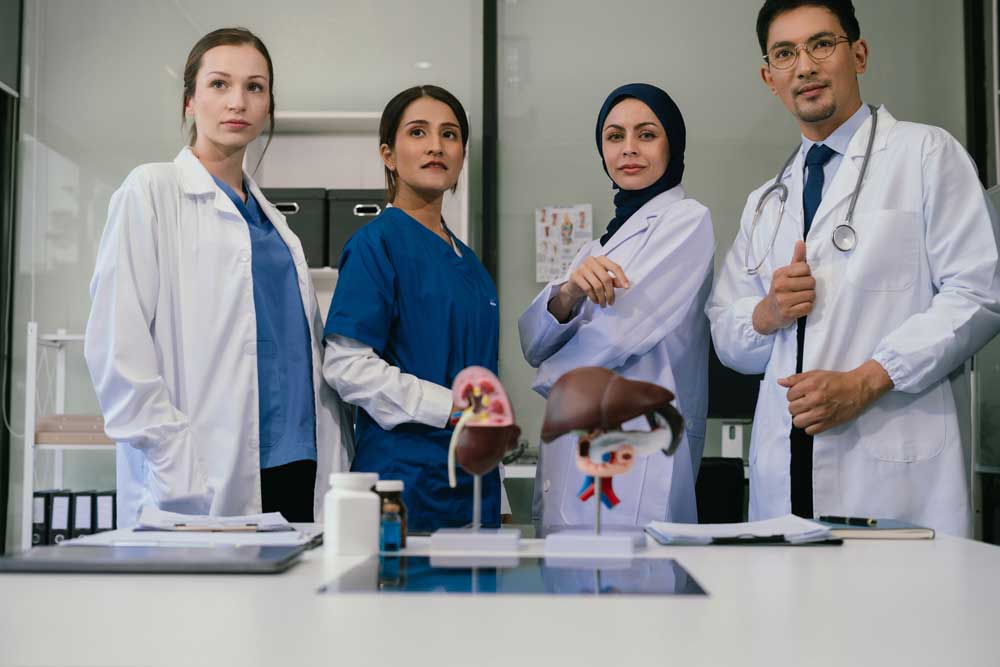Introduction
Global health issues, defined as challenges that transcend national boundaries and necessitate international collaboration, are integral to broadening the perspective of students in Anatomy and Physiology (A&P). By engaging with topics such as malnutrition, students can connect theoretical knowledge of human systems to real-world health crises. This essay examines malnutrition as a global health issue, exploring its physiological impacts on the human body, its relevance to A&P coursework, and the broader implications for health equity. Through this analysis, the essay aims to demonstrate how integrating global health topics into A&P education fosters a deeper understanding of bodily functions and societal health challenges.
Malnutrition as a Global Health Issue
Malnutrition, encompassing both undernutrition and overnutrition, is a critical global health concern affecting millions worldwide. According to the World Health Organization, undernutrition contributes to approximately 45% of deaths among children under five, while overnutrition fuels the rise of non-communicable diseases such as obesity and diabetes (WHO, 2020). Generally, malnutrition arises from inadequate or imbalanced nutrient intake, often exacerbated by poverty, conflict, and lack of access to food resources. This issue is particularly relevant to A&P studies, as it directly impacts the functioning of multiple body systems, offering a practical context for understanding human physiology.
Physiological Impacts of Malnutrition
From an A&P perspective, malnutrition profoundly affects the body’s structural and functional integrity. Undernutrition, for instance, can lead to muscle wasting due to insufficient protein intake, impairing the musculoskeletal system’s ability to support movement and posture (Saunders & Smith, 2010). Furthermore, deficiencies in essential vitamins and minerals, such as iron or vitamin D, disrupt hematopoiesis and bone health, respectively, resulting in conditions like anemia and rickets. In contrast, overnutrition often leads to adipose tissue accumulation, increasing the risk of cardiovascular strain and metabolic disorders, which are central topics in A&P curricula. Indeed, studying these effects enables students to apply concepts of homeostasis and organ system interactions to real-world scenarios, enhancing their critical understanding of physiological balance.
Relevance to Anatomy and Physiology Education
Incorporating malnutrition into A&P education provides a unique opportunity to bridge theoretical learning with practical global health challenges. For example, examining how nutrient deficiencies impair cellular metabolism or immune responses allows students to contextualize the importance of digestive and immune system functions. Moreover, it encourages a critical approach to health disparities, as students evaluate why certain populations are disproportionately affected by malnutrition due to systemic inequities (Black et al., 2013). This perspective is arguably essential for future healthcare professionals who must address such challenges in diverse settings. However, a limitation lies in the scope of A&P courses, which may not fully cover the socioeconomic factors driving malnutrition, potentially restricting a comprehensive analysis.
Conclusion
In summary, integrating global health issues like malnutrition into A&P education enriches students’ understanding by linking coursework to pressing real-world challenges. The physiological impacts of malnutrition on various body systems provide a tangible application of theoretical concepts, fostering analytical skills and awareness of health inequities. Therefore, such topics not only enhance academic learning but also prepare students to address complex global health problems in their future careers. The broader implication is a call for curricula to increasingly incorporate interdisciplinary perspectives, ensuring that A&P education remains relevant in an interconnected world.
References
- Black, R. E., Victora, C. G., Walker, S. P., Bhutta, Z. A., Christian, P., de Onis, M., … & Uauy, R. (2013). Maternal and child undernutrition and overweight in low-income and middle-income countries. The Lancet, 382(9890), 427-451.
- Saunders, J., & Smith, T. (2010). Malnutrition: Causes and consequences. Clinical Medicine, 10(6), 624-627.
- World Health Organization. (2020). Malnutrition fact sheet. WHO.
Please note: AI-generated content may sometimes include references that are inaccurate or do not exist. We strongly recommend verifying each reference.


